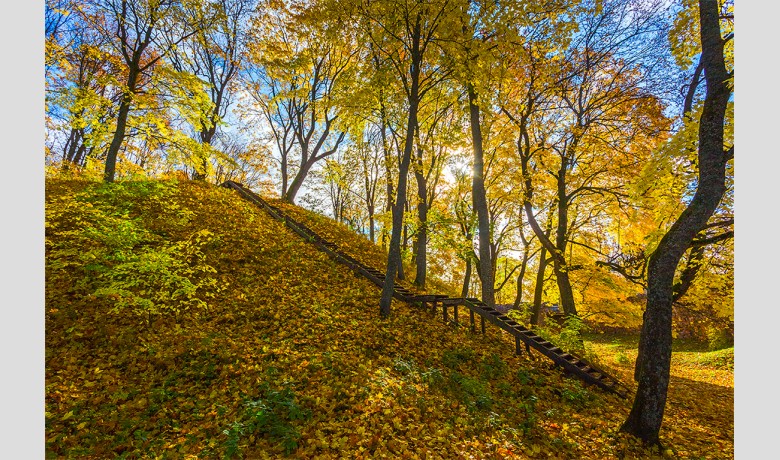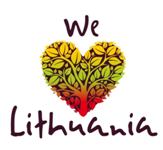The spectacular Trakai landscape, abundant in lakes and rivers, is distinguished not only by its natural heritage but also by its rich cultural and historical heritage. On the peak of the peninsula on the west bank of Lake Luka (Bernardinai), stands a hill fort. It rises 17 meters above the ground and is called Sacrifice Hill – although there is no known reason for the name. There are very few trees on the top of the hill and thus it offers a wonderful view of the spectacular landscape of Trakai Peninsula Castle and its surrounding lakes.
A hill fort is a hill with a castle which is or once was at the top of it with a visible dyke made of soil. Interestingly, in Lithuanian, the word “pilis” (Eng. a castle) is derived from the word “pilti” (Eng. pour). Sacrifice Hill is one of about 1,000 hill forts found on Lithuanian territory.
The main function of Sacrifice Hill, like most other mounds, was to protect the castle and the surrounding settlement. The locals as well as troops would gather on the platform at the top of the hill to defend themselves from attackers. The estimated length of the platform is about 45 meters and it is 17 meters wide. The mound’s safety is further ensured by the 18-meter-wide and 3-meter-deep ditch surrounding it.
The Trakai Peninsula Castle and its defense complex, including Sacrifice Hill, are barely mentioned in the written sources. It is believed that the nearly 20-year-long construction of the Peninsula Castle took place in the 14th century and was carried out by the Grand Duke of Lithuania Kęstutis. Before the construction of the Peninsula Castle, the residence of the Grand Dukes of Lithuania was the Old Trakai Castle, located 3 km from the town of Trakai.
In 2005, according to the order of the Minister of Culture of the Republic of Lithuania, Sacrifice Hill became a state-protected site. Presently, various events take place at the foot of the hill fort including the Medieval Festival, equestrian competitions, old car exhibitions, and so on.
Origin of the Name of Sacrifice Hill
The hill fort located on the territory of Trakai Peninsula Castle has been called Sacrifice Hill since ancient times. Although, it is still a mystery how this name came about.
According to a well-known legend, the hill was used to make sacrifices to the pagan gods. Count Eustachy Tyszkiewicz who explored this hill in the middle of the 19th century, discovered a perforated spoon. According to the archaeologist, this spoon was used to collect the victims’ blood in sacrificial rituals.
Later, other archaeologists examining the perforated spoon established that it was a much earlier product. Therefore, no reliable sources have been found to prove that Sacrifice Hill was indeed once a pagan sacrificial site.
The Hill Fort as Defensive Structure
The main purpose of the mound was to defend, therefore, people always sought to install mounds in areas protected by a variety of natural barriers. From the defensive perspective, hills protected by surrounding bodies of water or steep slopes were especially useful and suitable for hill fort construction.
The height and steepness of the hill’s slopes were important signs of the mound’s inaccessibility. Additional protection of the castle was ensured by the construction of natural obstacles like man-made ground piles or ditches. Indeed, climbing the 17-meter-high Sacrifice Hill can be a serious challenge. Fortunately, today you can use steps that have been added to the southwest slope to climb the hill and enjoy the view.
Today, it is especially difficult to find a mound in Lithuania that would still have its original appearance. Often you need to use your imagination to picture their former steepness, ditches, and barriers. Alternatively, try to imagine the significant weight of the armor and weapons that knights had to carry. Incredibly, a knight’s armor could weigh anywhere up to 40 kg.










